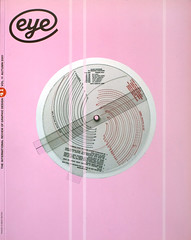Autumn 2001
Light and shade at the picture house
Dennis Hopper: A Keen Eye
Stedelijk Museum Amsterdam, £21The work of conceptualist photographer Hiroshi Sugimoto explores notions of ‘comparison and similarity’. You might call him a serial conceptualist, since he devotes himself to photographing single subjects over and over again.
In 1997, MOCA (the Museum Of Contemporary Art), Los Angeles commissioned Sugimoto to photograph twentieth-century architecture. He photographed the buildings out of focus in order to replicate the original imaginative visions of the architects. Another series investigates near identical statues of Buddha found in Japanese temples. Yet another takes seascapes as its subject: classic Sugimoto territory, always the same, yet always different.
His book Theatres is a record made between 1976 and 1999 of cinema screens. Superficially, the book seems unremarkable; a slender idea stretched membrane thin. But look beneath the emulsion of these simple, technically adroit images and they begin to exert an uncanny power. All the pictures adhere to the same formula and like the music of Steve Reich their power is in their willingness not to deviate from that formula. Each photograph is taken in a movie theatre. Each photograph features a rectangle of glowing white light as its central visual component. Each rectangle is, of course, a cinema screen.
The first half of the book contains pictures of old theatres with proscenium arches and velvet curtains, built when movies were seen as a continuation of theatre. In the second half of the book, Sugimoto photographs open-air drive-ins and modern cinemas, including one in Osaka designed by Tadao Ando. These photographs have a much sharper aesthetic bite. The glowing white rectangles seem more at home here, less anachronistic.
But what makes Sugimoto’s work so compelling is the knowledge that to achieve these blinding white rectangles, he photographed entire movies as single exposures. In every instance the result was a white screen. Sugimoto notes that although all films emerge as white, the degree of whiteness varies according to the type of film: optimistic movies end up brighter than macabre ones. You can’t help wondering if he photographed any of Dennis Hopper’s films (there are many dark moments in Hopper’s cinematic canon).
For the vast majority of movie-goers who saw Dennis Hopper in Easy Rider, Colors or Blue Velvet, few will have known that he had a parallel career as an artist. Although perhaps ‘career’ is too prosaic a word to use to describe Hopper’s volatile and crises strewn professional life. Hopper is no conceptualist, that’s for sure. In fact, he’s an arch-sensualist. With Hopper, what you see is what you get. A typical piece of Hopper art, a neon sign that reads ‘This Is Art’, is simply that – a neon sign with a message. You sense nothing beyond his delight in the bluntness of its assertion.
The catalogue for Hopper’s recent show in Amsterdam is a fairground ride of mixed media. There’s a good supply of his famous 1960s photographs chronicling the US art scene. These photographs demonstrate Hopper’s rich narrative ability with a single lens reflex camera. And although his pictures lack the visionary stillness that is the hallmark of all great photography, it’s clear that Hopper is a significant American photographer: the cameras he wore round his neck in Apocalypse Now (1979) were more than the props of an over-zealous method actor. If it hadn’t been for a catastrophic fire at his Bel Air home in 1961, in which 300 paintings perished, Hopper might have spent the last 40 years painting. However, following the immolation of his youthful work, he abandoned painting in favour of movie-making.
After making Colors (1988), Hopper rediscovered the urge to paint. His graffiti paintings (inspired by the gang culture he portrayed in Colors) are amongst the most impressive in this collection. His canvasses, often with grainy video stills attached, revel in the anarchic swirls and raw street calligraphy of spray-can art. They are convincing and coherent artistic statements, unencumbered by attempts to intellectualise or patronise graffiti.
Hopper makes no distinction between his movie work and his experiments in the visual arts. Even Easy Rider [1969] reveals Hopper’s artistic ambition. His fierce aesthetic sensibility can be seen in the film’s use of flashbacks, jump cuts, and what one critic has called ‘the self-conscious use of the camera’. The influence of the radical film-makers Hopper knew in the 1960s – Bruce Connor, Stan Brakhage and Andy Warhol – is clearly visible in Hopper’s road movie that ‘changed Hollywood forever’.
Adrian Shaughnessy, director, Intro, London
First published in Eye no. 41 vol. 11, 2001
Eye is the world’s most beautiful and collectable graphic design journal, published quarterly for professional designers, students and anyone interested in critical, informed writing about graphic design and visual culture. It is available from all good design bookshops and online at the Eye shop, where you can buy subscriptions and single issues.

